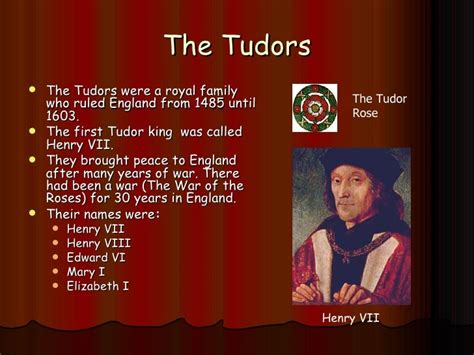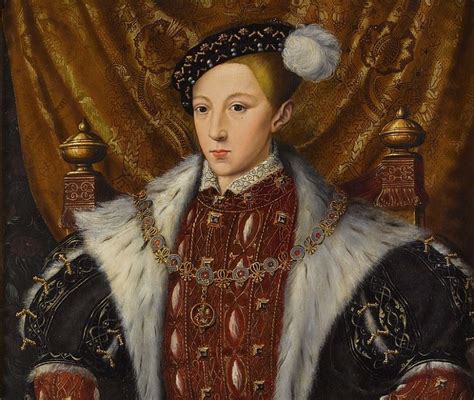james tudor dynasty | brief history of the tudors james tudor dynasty James I, king of Scotland (as James VI) from 1567 to 1625 and first Stuart king of England from 1603 to 1625, who styled himself ‘king of Great Britain.’ He was a strong advocate of royal absolutism, and his conflicts with Parliament set the . Product details. Delivery & Returns. Gifting. Impeccable craftsmanship and timeless style define the LV Damier 40mm reversible belt. This elegant wardrobe essential features a double-sided calf-leather strap with midnight navy blue on the front and black on the reverse, for effortless versatility.
0 · who ruled after the tudors
1 · who established the tudor dynasty
2 · tudor times website
3 · tudor dynasty meaning
4 · the tudor dynasty family tree
5 · house of tudor founder
6 · house of tudor family tree
7 · brief history of the tudors
Discover Louis Vuitton LV Iconic 20mm Reversible Belt: Featured in Nicolas Ghesquière’s Cruise 2024 show, the LV Iconic 20mm Reversible Belt updates the classic Monogram signature with a brighter, more contemporary color palette. Monogram Dune canvas is paired with sumptuous semi-aged natural cowhide on the reverse side, accented by a .
who ruled after the tudors
House of Tudor, an English royal dynasty of Welsh origin, which gave five sovereigns to England: Henry VII (reigned 1485–1509); his son, Henry VIII (1509–47); followed . This decision secured a peaceful transition of power and ended the Tudor line, as Elizabeth died without children. With James VI’s ascendance to the English throne, the Tudor .
who established the tudor dynasty
James I, king of Scotland (as James VI) from 1567 to 1625 and first Stuart king of England from 1603 to 1625, who styled himself ‘king of Great Britain.’ He was a strong advocate of royal absolutism, and his conflicts with Parliament set the .
The Tudor dynasty may have been short-lived, spanning just 118 years, but its impact on England and the world was profound and enduring. From Henry VII to Elizabeth I, .
The House of Tudor ruled England from 1485 to 1603 CE. The period is seen as a Golden Age of English history when strong-willed monarchs made lasting contributions to the .
The House of Tudor, reigning from 1485 to 1603, stands as one of the most significant dynasties in English history. This period is marked by dramatic political shifts, .
The Tudor dynasty ended with Elizabeth's death in 1603, and the English throne passed to James VI of Scotland, who became James I of England. For a brief period from July 10 to July 19, . The crown passed to James VI of Scotland, the son of Mary, Queen of Scots, who became James I of England, initiating the Stuart dynasty. Despite its relatively brief duration, the Tudor dynasty left a profound legacy .
The Tudor dynasty or House of Tudor' (Welsh: Tudur) was a series of five monarchs of Welsh origin who ruled England and Ireland from 1485 until 1603. The three main monarchs (Henry .
tudor times website
Tudor Rose. The Tudor dynasty was a series of kings and queens of England. Their ancestors were from Wales. This line of rulers started in 1485 and lasted until 1603. . When she died, James I became King of England. He was the son of Elizabeth's cousin, Mary Stuart. This started the Stuart dynasty. Religion in England. During the Tudor period .19th June 2016 marks the 450th birthday of King James I and VI of England and Scotland. Unification between the two countries, though at times strained, was brought about by James ascending the throne of England in 1603. The . Henry Tudor’s consolidation of power: character and aims; establishing the Tudor dynasty; Government: councils, parliament, justice, royal finance, domestic policies . was signed between England and Scotland on 31 October 1502 at Westminster by Henry VII and at Glasgow Cathedral by James IV on 10 December. It was the first attempt in about .Thus began the start of the Tudor dynasty. However, the Tudor era would be coloured by rebellions, conspiracies, challenges to the succession and fear of further civil war. Henry VIII, Catherine of Aragon and Anne Boleyn. Elizabeth’s half-sister Mary, was born in 1516 to Henry's first wife, Catherine of Aragon.

End of the Tudor dynasty. Elizabeth I dies aged 69. The Virgin Queen never married or had children. James VI of Scotland was her closest royal relative as they were both direct descendants of . His long exile ended on 15 August 1485 when King Richard III was defeated at Bosworth Field. The Plantagenet dynasty, having ruled England since 1154, ended in strife and the Tudor dynasty began. Henry Tudor, earl of Richmond; later titled King Henry VII son of Edmund Tudor and Margaret Beaufort born 28 January 1457 at Pembroke Castle, Wales The Tudor Dynasty began when Henry VII took the throne of England, married Elizabeth of York and had children. You could argue that the Tudor dynasty began . Husband 1: King James IV of Scotland; 11 Jun 1488-9 Sept 1513 Husband 2: Archibald Douglas, 6th Earl of Angus; 1489 22 January 1557 . Husband 3: Henry Stewart, 1st Lord Methven; 1495 .
The Wars of the Roses: the beginning of the Tudor dynasty. The history of the Tudor dynasty begins in the mid-fifteenth century with the War of the Roses, a series of dynastic conflicts between the English monarchy and nobility.This war started on 22 May 1455 and lasted until 16 June 1487.. Though the causation of the War is continuously disputed by many medieval .
Sharing your pictures from your trips to Tudor sites in Britain or abroad on the ‘Your Tudor Pictures’ gallery is fun and easy. Simply email your photographs as attachments to [email protected] and we will put them up on the gallery for all to see. Please make sure you label your pictures so we give the correct information for you.
James I, king of Scotland (as James VI) from 1567 to 1625 and first Stuart king of England from 1603 to 1625, who styled himself ‘king of Great Britain.’ . His 22-year-long reign over England was to prove almost as unfortunate for the Stuart dynasty as his years before 1603 had been fortunate. . To parliamentary statesmen used to Tudor . TUDOR DYNASTY ()TUDOR DYNASTY (ENGLAND). Henry Tudor (ruled 1485 – 1509) traced his royal blood through his mother, Margaret Beaufort, who was a descendant of John of Gaunt, the younger son of Edward III (ruled 1327 – 1377). After the death of Henry, Prince of Wales, son of Henry VI (ruled 1470 – 1471), in 1471, Henry Tudor was the surviving male .The Tudor dynasty or House of Tudor' (Welsh: Tudur) was a series of five monarchs of Welsh origin who ruled England and Ireland from 1485 until 1603. The three main monarchs (Henry VII, Henry VIII and Elizabeth I) each played an important part in turning England from a European backwater still immersed in the Middle Ages into a powerful Renaissance state that in the .dynasty or house reign 1 Athelstan was king of Wessex and the first king of all England. 2 James VI of Scotland became also James I of England in 1603. Upon accession to the English throne, he styled himself "King of Great Britain" and was so proclaimed. . Tudor 1558–1603 Sovereigns of Great Britain and the United Kingdom 2, 3;
Today, we revisit my conversation with Dr. James Taffe on the endlessly intriguing Jane Boleyn, Lady Rochford. After the execution of her husband, George Boleyn, and sister-in-law Anne in 1536, Jane skillfully navigated the dangerous waters of Tudor politics, securing a place in the households of each successive queen.The House of Tudor (/ ˈ tj uː d ər / TEW-dər) [1] was an English and Welsh dynasty that held the throne of England from 1485 to 1603. [2] They descended from the Tudors of Penmynydd, a Welsh noble family, and Catherine of Valois.
House of Tudor, an English royal dynasty of Welsh origin, which gave five sovereigns to England: Henry VII (reigned 1485–1509); his son, Henry VIII (1509–47); followed by Henry VIII’s three children, Edward VI (1547–53), Mary I (1553–58), and Elizabeth I (1558–1603). This decision secured a peaceful transition of power and ended the Tudor line, as Elizabeth died without children. With James VI’s ascendance to the English throne, the Tudor era gave way to the Stuart dynasty. Legacy of the Tudor Dynasty. The Tudor dynasty, in power from 1485 to 1603, left a profound mark on English history, culture, and .James I, king of Scotland (as James VI) from 1567 to 1625 and first Stuart king of England from 1603 to 1625, who styled himself ‘king of Great Britain.’ He was a strong advocate of royal absolutism, and his conflicts with Parliament set the stage . The Tudor dynasty may have been short-lived, spanning just 118 years, but its impact on England and the world was profound and enduring. From Henry VII to Elizabeth I, the Tudor monarchs shaped the course of history, leaving a legacy that continues to fascinate and inspire us to this day.
buy fendi casa plots lebanon
The House of Tudor ruled England from 1485 to 1603 CE. The period is seen as a Golden Age of English history when strong-willed monarchs made lasting contributions to the nation's history, strutted around in flamboyant clothes and gave endless material for historians and fiction writers ever-after. The period had its darker side with the .

The House of Tudor, reigning from 1485 to 1603, stands as one of the most significant dynasties in English history. This period is marked by dramatic political shifts, cultural flourishing, and profound religious transformations.The Tudor dynasty ended with Elizabeth's death in 1603, and the English throne passed to James VI of Scotland, who became James I of England. For a brief period from July 10 to July 19, 1553, Lady Jane Grey was Queen of England. She is known as the Nine Days' Queen.
The crown passed to James VI of Scotland, the son of Mary, Queen of Scots, who became James I of England, initiating the Stuart dynasty. Despite its relatively brief duration, the Tudor dynasty left a profound legacy on England.
tudor dynasty meaning
the tudor dynasty family tree
house of tudor founder
LOUIS VUITTON Official USA site | LOUIS VUITTON
james tudor dynasty|brief history of the tudors


























